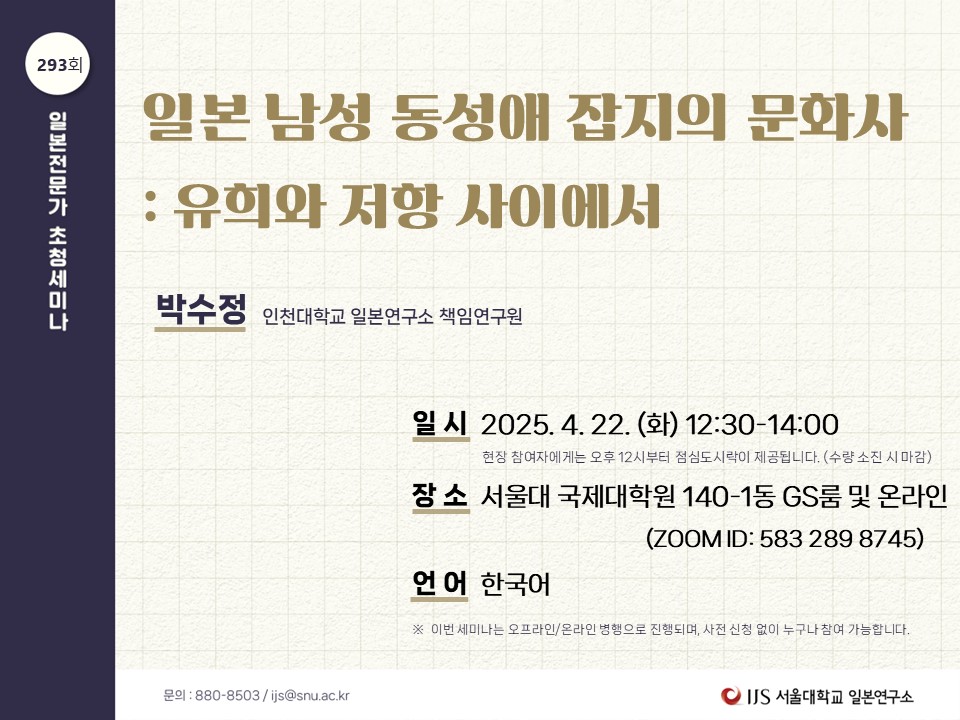
The Seoul National University Institute for Japanese Studies (SNU-IJS) has been hosting a series of talks encompassing Japanese politics, economy, culture and arts. Featuring experts from Europe, the US. and Japan, we offer these talks in multiple languages, including Japanese, Korean, and English.
We are pleased to host the 293th lecture as part of the Japan Specialist Seminar series, titled "A Cultural History of Japanese Male Homosexual Magazines: Between Play and Resistance.“
This seminar will be held in a hybrid format. Anyone interested is welcome to attend without prior registration. Lunch boxes will be provided starting at 12 p.m. (Please note that availability may be limited.)
Date: April 22, 2025 (Tue.) 12:00 - 14:00 (The lecture will begin at 12:30)
Venue : SNU GSIS (Bldg 140-1) GS Room and Online (Zoom)
- Zoom ID : 583 289 8745
- Zoom Link : https://snu-ac-kr.zoom.us/j/5832898745
Lecturer: PARK Soo-jung (Senior Researcher, Institute for Japanese Studies, Incheon National University)
Title: A Cultural History of Japanese Male Homosexual Magazines: Between Play and Resistance
Emerging amid the postwar craving for entertaining reading material, Kitan Club (1947–1975), one of the so-called kasutori (カストリ) magazines, evolved into an adult culture magazine by embracing various sexual preferences that were, at the time, labeled as “perverse sexual desires.” While resisting state censorship and campaigns against obscene publications, Kitan Club earned the support of individuals whose sexuality defied societal norms. It later influenced the development of male homosexual and S/M magazines, which began to appear in earnest from the 1960s onward. In particular, Sabu (1974–2002), a male homosexual magazine specializing in S/M, functioned as a space of play where sexual desire and its representation intersected. At the same time, as Sabu navigated the gay liberation movements of the 1970s and the AIDS crisis of the 1980s, it came to embody the potential for early practices of articulating and forming minority identities. This presentation aims to shed light on the trajectory of minority media as it moved from adult culture magazines to male homosexual publications, and to explore the presence of Sabu as it existed between play and resistance.
Language : Korean
Inquiry : SNU-IJS (880-8503 / ijs@snu.ac.kr)